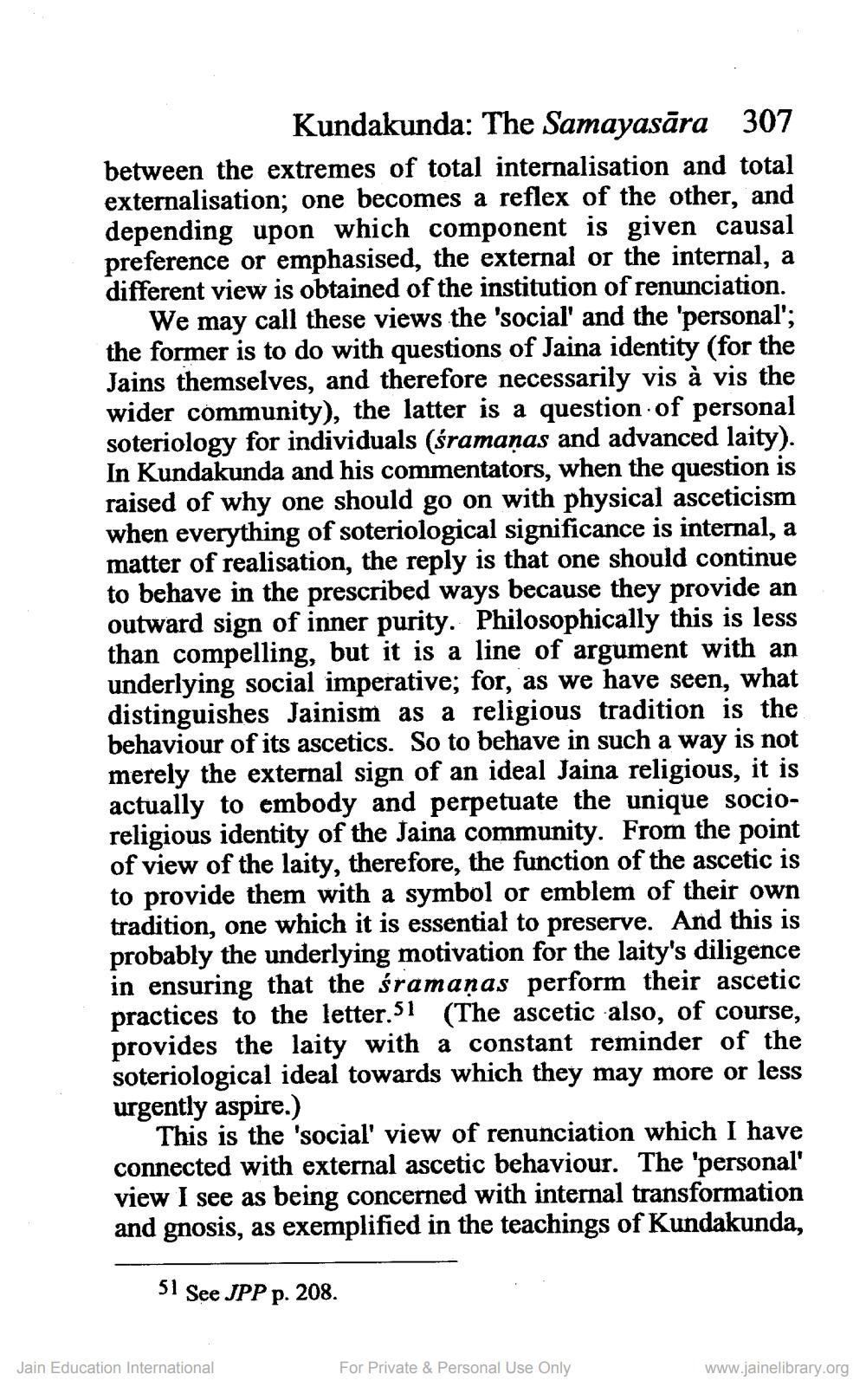________________
Kundakunda: The Samayasāra 307
between the extremes of total internalisation and total externalisation; one becomes a reflex of the other, and depending upon which component is given causal preference or emphasised, the external or the internal, a different view is obtained of the institution of renunciation.
We may call these views the 'social' and the 'personal'; the former is to do with questions of Jaina identity (for the Jains themselves, and therefore necessarily vis à vis the wider community), the latter is a question of personal soteriology for individuals (śramaṇas and advanced laity). In Kundakunda and his commentators, when the question is raised of why one should go on with physical asceticism when everything of soteriological significance is internal, a matter of realisation, the reply is that one should continue to behave in the prescribed ways because they provide an outward sign of inner purity. Philosophically this is less than compelling, but it is a line of argument with an underlying social imperative; for, as we have seen, what distinguishes Jainism as a religious tradition is the behaviour of its ascetics. So to behave in such a way is not merely the external sign of an ideal Jaina religious, it is actually to embody and perpetuate the unique socioreligious identity of the Jaina community. From the point of view of the laity, therefore, the function of the ascetic is to provide them with a symbol or emblem of their own tradition, one which it is essential to preserve. And this is probably the underlying motivation for the laity's diligence in ensuring that the śramanas perform their ascetic practices to the letter.51 (The ascetic also, of course, provides the laity with a constant reminder of the soteriological ideal towards which they may more or less urgently aspire.)
This is the 'social' view of renunciation which I have connected with external ascetic behaviour. The 'personal' view I see as being concerned with internal transformation and gnosis, as exemplified in the teachings of Kundakunda,
51 See JPP
Jain Education International
P. 208.
For Private & Personal Use Only
www.jainelibrary.org




